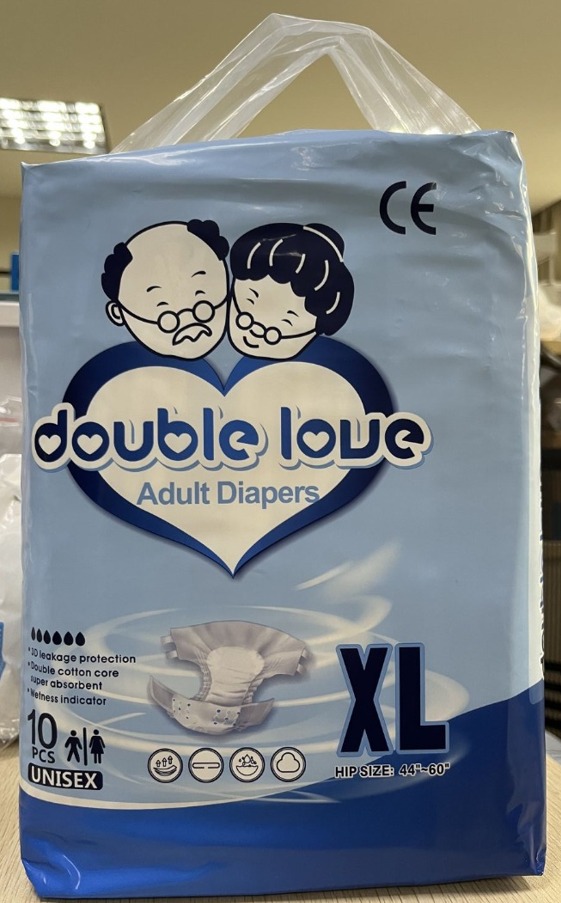Further Insights into Adult Incontinence Products
In addition to the basic understanding of adult incontinence products, it’s essential to delve deeper into the considerations, potential challenges, and the overall impact of incontinence on individuals and their caregivers.
The Emotional Impact of Incontinence
Incontinence can lead to significant emotional distress. Many individuals experience feelings of shame, embarrassment, or frustration due to their condition.
This emotional burden can be exacerbated by societal stigma and misconceptions surrounding incontinence. Individuals must understand that they are not alone and that incontinence is a common issue among various age groups, not just the elderly.
Support groups, counseling, and open conversations with family and friends can help alleviate some of the emotional challenges associated with incontinence. Encouragement to seek medical advice can also lead to discovering underlying conditions that may be treatable, which can improve both physical and emotional well-being.
Caregiver Considerations
For caregivers, understanding and managing incontinence can be challenging. Caregivers often face the dual task of providing physical assistance while also addressing the emotional needs of the individual. Here are some tips for caregivers:
1. Education: Learning about incontinence and the various products available can empower caregivers to provide better support. Understanding the different types of products and their uses can help in selecting the right options for the person they are caring for.
2. Communication: Maintaining open lines of communication is vital. Discussing preferences, concerns, and feelings about incontinence can foster a supportive environment. This also allows the individual to express their comfort levels with certain products.
3. Routine Management: Establishing a routine for changing incontinence products can help manage leaks and maintain hygiene. Caregivers should create a schedule that aligns with the individual’s needs and lifestyle, ensuring that there is a plan in place for regular changes.
4. Support and Empathy: Providing emotional support and showing empathy can make a significant difference. Acknowledging the difficulties faced by the individual and offering reassurance can help build trust and reduce anxiety related to incontinence.
Innovations in Incontinence Products
The market for adult incontinence products is continually evolving, with innovations aimed at improving comfort, effectiveness, and discretion. Some of the latest advancements include:
1. Smart Technology: Some companies are developing smart incontinence products equipped with sensors that can alert users or caregivers when a change is needed. These products can help prevent leaks and maintain hygiene.
2. Eco-Friendly Options: As awareness of environmental issues grows, many manufacturers are focusing on creating eco-friendly incontinence products. These include biodegradable diapers and washable, reusable options that minimize waste.
3. Enhanced Absorbency: New materials and designs are being developed to improve absorbency while remaining lightweight and comfortable. Products now often include advanced wicking technology that draws moisture away from the skin, helping to prevent irritation.
4. Customization: Some brands offer customizable products that allow users to choose specific features, such as absorbency level, fit, and even fragrance. This level of personalization can lead to improved satisfaction and comfort.
5. Odor Control: Many modern products now incorporate advanced odor control technologies that neutralize odors rather than just masking them. This improvement can significantly enhance the user experience, leading to greater confidence in social situations.
The Importance of Lifestyle Changes
In addition to using incontinence products, lifestyle changes can also play a crucial role in managing incontinence. Here are some strategies that may help:
1. Diet: A balanced diet that includes adequate fiber can help prevent constipation, which can exacerbate incontinence issues. Staying hydrated is essential, but individuals may need to monitor fluid intake to avoid excess urination.
2. Pelvic Floor Exercises: Engaging in pelvic floor exercises, such as Kegel exercises, can strengthen the muscles responsible for bladder control. These exercises are often recommended by healthcare professionals and can be beneficial for both men and women.
3. Bladder Training: This technique involves setting a schedule for bathroom visits to train the bladder to hold urine for longer periods. Gradually extending the time between visits can help improve bladder control over time.
4. Weight Management: Maintaining a healthy weight can reduce pressure on the bladder and pelvic floor, potentially alleviating some incontinence symptoms. A combination of regular exercise and a balanced diet can support weight management efforts.
Conclusion
Adult incontinence is a complex issue that requires a multifaceted approach to management. By understanding the various products available, addressing the emotional impact, considering caregiver needs, and embracing innovations, individuals can take control of their incontinence.
Additionally, making lifestyle changes can further enhance the effectiveness of incontinence management strategies.
Ultimately, the goal is to improve the quality of life for those affected by incontinence, allowing them to live confidently and fully engage in their daily activities. Through education, support, and the right products, individuals can navigate the challenges of incontinence with dignity and assurance.

No responses yet